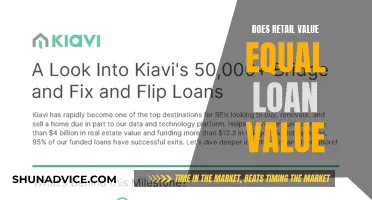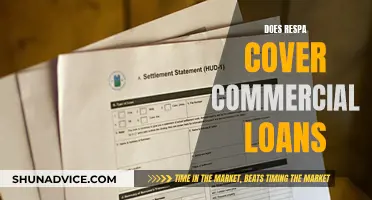
Purchasing Power is a program that gives you access to thousands of goods and services, allowing you to buy what you need now and pay for them over time directly from your paycheck. It is not a discount savings program, and it has spending limits in place to ensure you don't overextend your income. This is particularly useful when you want to avoid high-interest loans and credit cards, as it offers an alternative way to buy things without relying on credit. A good credit score can also enhance your purchasing power by providing access to lower interest rates and fees, making it easier to save for down payments and stay on top of loan payments.
| Characteristics | Values |
|---|---|
| Payment method | Directly from your paycheck |
| Payment period | 6 or 12 months |
| Credit check | Not required |
| Spending limit | Depends on the number of months you've been an active employee |
| Available products | More than 40,000 name-brand products |
| Hidden fees or down payments | None |
| Shipping | Yes |
| Warranties | Yes |
What You'll Learn

Purchasing Power offers access to products with payroll deductions
Purchasing Power is a voluntary employee benefits program that provides immediate access to a wide range of products from top brands. It offers a convenient and flexible way to purchase goods without relying on credit cards, savings, or loans. With Purchasing Power, individuals can pay for their desired products directly from their paychecks over time, typically with the option to pay over 6 or 12 months.
One of the key advantages of Purchasing Power is that it eliminates the need for high-interest financial alternatives, such as credit cards or payday loans. By tapping into their future paychecks, employees can acquire the products they need or want without incurring additional debt or interest charges. This promotes responsible budgeting and helps reduce financial stress, which is a prevalent issue among US workers, affecting their sleep, happiness, and productivity.
The program offers transparent pricing with no hidden fees or down payments. The prices include shipping, installation, and warranty costs, ensuring that individuals know the total cost upfront. Additionally, Purchasing Power automatically verifies eligibility and purchase limits, helping individuals stay within their means and avoid overextending their paychecks.
To illustrate how Purchasing Power works, consider an employee who needs to replace a broken refrigerator immediately. With Purchasing Power, the employee can purchase the appliance upfront and pay for it directly from their paycheck over the next 6 or 12 months. This option provides a convenient alternative to using credit cards or dipping into savings, allowing employees to acquire necessary goods without disrupting their financial stability.
In summary, Purchasing Power offers a unique benefit to employees by providing access to a diverse range of products through convenient payroll deductions. It empowers individuals to make purchases without resorting to high-interest loans or compromising their financial wellness. With its transparent pricing, upfront costs, and spending limits, Purchasing Power helps employees make informed decisions while enjoying the convenience of paying directly from their paychecks over time.
Prime Choice Funding: No-Fuss No-Income Verification Loans
You may want to see also

No credit checks or hidden fees
Purchasing Power is a program that allows employees to buy products and pay for them over time through payroll deduction. It does not require a credit check and there are no hidden fees or down payments.
The program was founded over 20 years ago in 2001 and was originally in the business of selling computers through payroll deduction. It has since expanded to offer a range of goods and services, including electronics, furniture, appliances, and home décor.
One of the key advantages of Purchasing Power is its no-credit-check model, which allows people with low credit scores or those rebuilding their credit to finance large purchases. The company views a person's job as their credit and uses the individual's salary and tenure to determine their spending limit. This model empowers employees to make good financial decisions by offering a fixed price that is paid down over time, with no escalating fees.
There are no hidden fees associated with Purchasing Power. The price you see is the total cost per pay period, and it includes shipping, warranties, and any other charges that may be incurred over time. This differs from purchasing through credit cards or financing, where the purchase price often does not include these additional costs.
In addition, Purchasing Power does not charge late fees, and there are no penalties for extending the payment period. This flexibility can help to reduce financial stress and improve productivity in the workplace.
PSLF Loan Forgiveness: Does It Cover Graduate Studies?
You may want to see also

Alternative to high-interest loans and credit cards
High-interest loans and credit cards can be a risky option, with potential drawbacks such as high interest rates, surcharges, and the temptation to go deep into debt. Here are some alternatives to consider:
Purchasing Power
Purchasing Power is a program that allows you to buy products upfront and then pay for them directly from your paycheck over 6 or 12 months. It offers access to thousands of name-brand products without the need for cash, savings, credit cards, or loans. There are no hidden fees or down payments, and it helps you avoid tying up available cash or credit lines. It also eliminates the need for credit checks, making it accessible to those with bad credit.
Debt Consolidation Loans
Debt consolidation loans can be a smart choice for managing high-interest debt from credit cards. They allow you to pay off all your debts at once and then repay the new loan in fixed monthly installments. You don't need perfect credit to apply, and there are options available for borrowers with bad credit. Debt consolidation loans offer a fixed interest rate, and you can explore credit card refinancing options with a 0% introductory APR period.
Credit Cards
Credit cards can be an alternative to installment loans if used responsibly and with timely repayments. They offer flexibility, exclusive perks, and potential introductory periods with 0% APR. However, it's important to create a realistic budget to avoid overspending, as high-interest rates and surcharges can accumulate significant costs.
Payday Alternative Loans (PALs)
If you're a member of a credit union, you may be eligible for Payday Alternative Loans (PALs). These small-dollar loans are offered by federal credit unions and can be a safer option than high-cost payday loans. Payday lenders often charge high fees and interest rates, so it's important to understand the total cost, including the annual percentage rate (APR), before signing any loan agreement.
Personal Loans
Personal loans can be an option even with bad credit, although the interest rates may be higher. Positive payment history is reported to credit bureaus, which can help build your credit score. Contacting your creditors to negotiate a payment plan can also reduce your monthly payments, providing some financial relief.
How PSECU Can Help You With Construction Loans
You may want to see also

Spending limits to ensure you don't overextend your paycheck
Purchasing Power is a program that allows you to buy products upfront and pay for them over 6 or 12 months directly from your paycheck. It does not require the use of cash, savings, credit cards, or loans. The program has spending limits in place to ensure that you don't overextend your paycheck.
To ensure you don't overextend your paycheck, it is important to set spending limits and stick to them. Here are some tips to help you set and maintain your spending limits:
Understand your spending habits
Keep a diary of your purchases for a month or two to understand your spending habits. Categorize your expenses into needs, wants, and savings. This will help you determine how well your spending aligns with your budget.
Create a budget
Consider using a percentage-based budget like the 50/30/20 rule, which involves dividing your after-tax income into three categories: 50% for needs, 30% for wants, and 20% for savings. This rule helps ensure your necessary costs are covered, you have money for discretionary spending, and you're actively saving for the future.
Automate your savings
If possible, automate your savings by setting up automatic deposits and payments. This will help you stay on track with your savings goals without having to manually transfer funds each time.
Use cash
Consider using cash for day-to-day spending instead of credit or debit cards. Studies have shown that people who use cash tend to spend 12-20% less than those who use cards.
Save for unexpected expenses
Remember to budget for irregular purchases that don't fall into fixed bills or day-to-day shopping. Save up for unexpected expenses to ensure your spending stays under control.
By following these tips and understanding your spending limits, you can better manage your finances and ensure you don't overextend your paycheck.
Private Loans: Impacting Your Financial Aid Eligibility?
You may want to see also

A good credit score can increase purchasing power
A good credit score can have a significant positive impact on your purchasing power. A higher credit score indicates a history of timely payments, low credit utilization, and a long credit history of paying off debts and loans. This can result in better interest rates on loans and a higher chance of loan approval, thereby increasing your purchasing power.
Lenders often view a high credit score as a positive indicator of a borrower's ability to manage debt and make timely payments. As a result, they may be more inclined to offer better loan terms and rates to individuals with good credit. This can translate directly into increased purchasing power, as you may be able to secure larger loans or qualify for loans that might not be accessible to those with lower credit scores.
Additionally, a good credit score can lead to lower insurance policy premiums and the approval of lower deposits when renting an apartment. These benefits can help you save money, which can then be allocated towards larger purchases. For example, with a good credit score, you may be able to secure a loan with a lower interest rate, reducing the overall cost of the loan and freeing up funds for other purchases.
Moreover, a good credit score can provide alternatives to high-interest credit cards and loans. Programs like Purchasing Power allow individuals to buy products upfront and pay for them directly from their paycheck over 6 to 12 months, without the need for credit cards or loans. This option helps avoid the accumulation of high interest typically associated with credit cards, preserving your purchasing power for other needs or unexpected expenses.
While a good credit score can enhance your purchasing power, it is important to remember that it is just one factor that lenders consider. Other factors, such as income, employment status, and debt-to-income ratio, also play a significant role in determining your overall purchasing power and loan eligibility.
Prosper's Refinance Loans: Pros, Cons, and the Process
You may want to see also
Frequently asked questions
Purchasing Power is a benefit program that gives you access to thousands of goods and services, allowing you to buy products upfront and pay over 6 or 12 months directly from your paycheck. It does not require the use of cash, savings, credit cards, or loans, and there are no hidden fees or down payments.
When you make a purchase through Purchasing Power, the cost is automatically deducted from your paycheck over time. There is no need for a credit check, and the program has spending limits in place to ensure you don't overextend your income.
Purchasing Power is not a loan, as it does not involve borrowing money or paying interest. Instead, it allows you to tap into your future paychecks to make purchases without incurring debt. It can be a useful alternative to high-interest loans or credit cards, helping you avoid the additional costs associated with financing.







